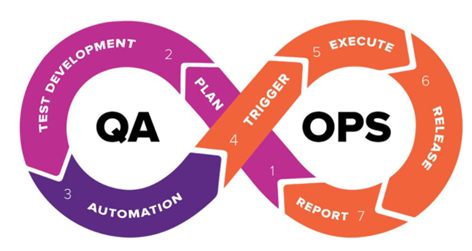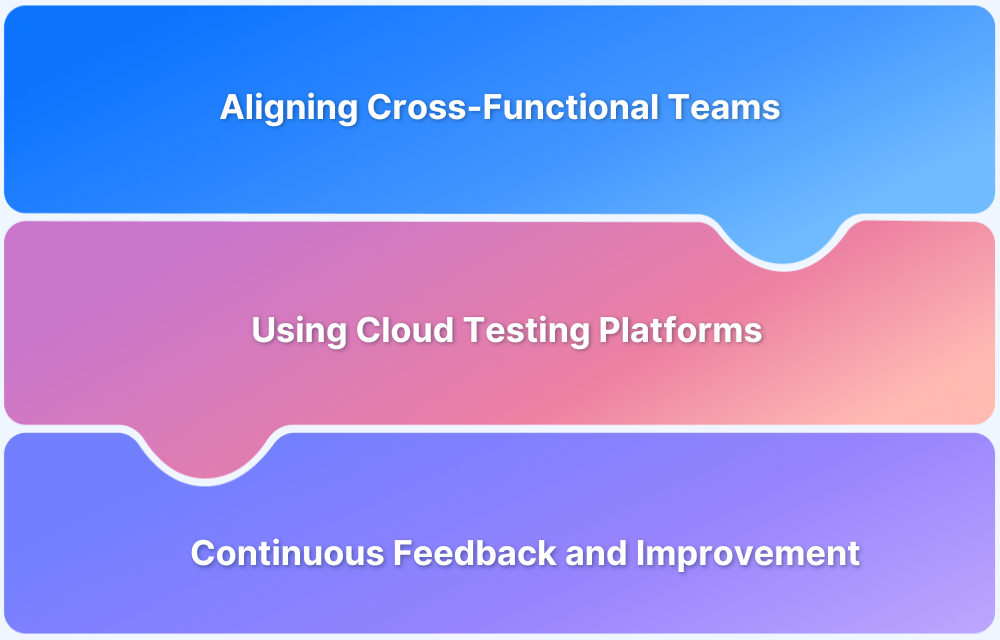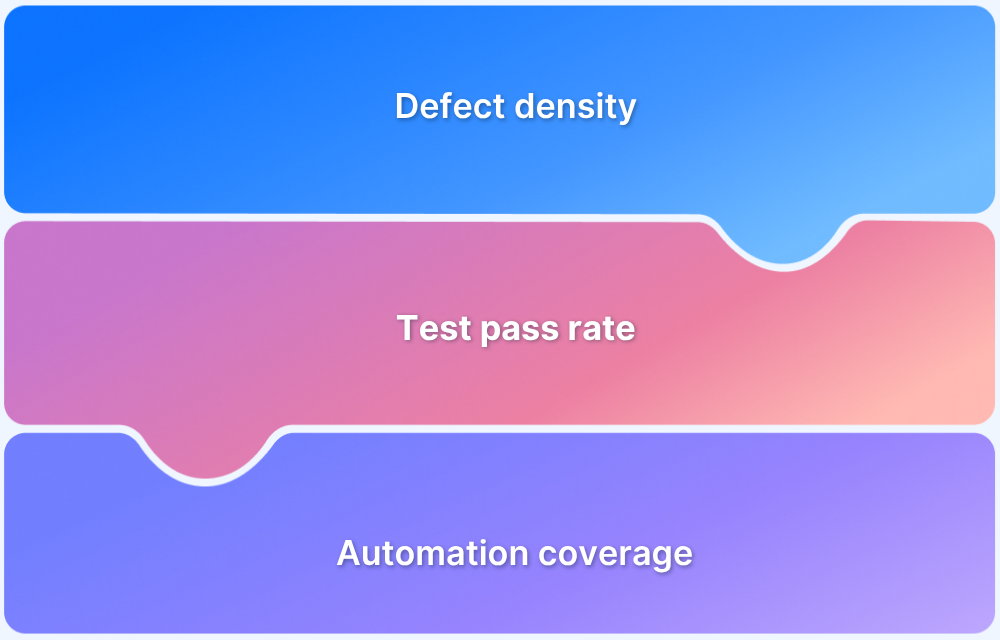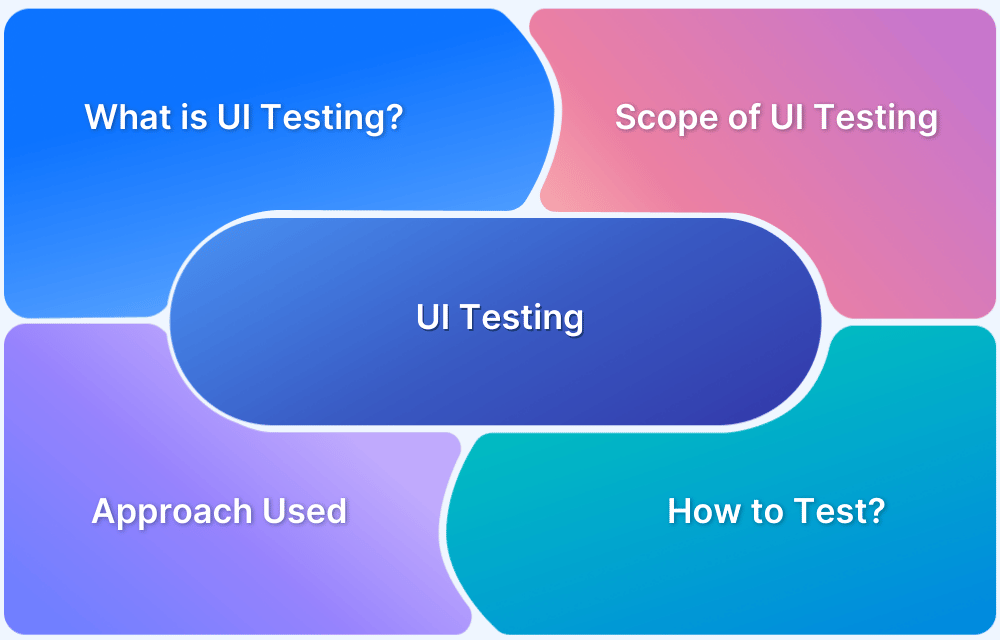QAOps. QAOps brings Quality Assurance into the CI/CD pipeline, embedding testers alongside dev and ops so quality is engineered continuously—not inspected at the end.
Overview
What is QAOps and Why Does it Matter?
- QAOps = integrating Quality Assurance directly into CI/CD pipelines.
- QA teams work with developers + operations, not in silos.
- Ensures continuous validation, faster releases, and higher quality.
- Builds on DevOps but adds quality-first focus at every stage.
Core Steps in the QAOps Lifecycle
- Trigger: plan accurate, automated test cases early.
- Implement: run parallel, scalable tests across teams.
- Report: generate snapshots, root cause details, and history for future debugging.
Testing Methodologies Used in QAOps
- Automated Testing: speeds up validation, reduces manual effort.
- Parallel Testing: run tests across browsers/OS at scale.
- Scalability Testing: ensures apps perform under varying loads.
- Regression Testing: validate new updates don’t break existing features.
- Exploratory Testing: catch real-world flaws beyond scripted cases.
- Geolocation Testing: verify app behavior across regions & standards.
QAOps vs DevOps: Key Differences
- DevOps → speed-first, QA as subset.
- QAOps → quality-first, QA as core role alongside Dev + Ops.
- QAOps ensures superior product reliability and customer experience.
This article explains QAOps as the integration of Quality Assurance into CI/CD pipelines, emphasizing continuous testing, collaboration, and quality-first practices to improve software reliability and delivery speed.
What is QAOps?
QAOps is an emerging practice that integrates QA (Quality Assurance) into the software delivery pipelines. It necessitates the QA team to work directly with the operations team and the development team.
- We can attain this by integrating QA procedures, automation, and a QA reporting dashboard with the SDLC.
- Implementing QAOps means giving the QA team an extra role in the software development life cycle and thus increasing the collaboration between the tester and the developer’s team.
QAOPs mainly adhere to two key principles:
- QA deeds must be incorporated into the Continuous Integration (CI)/Continuous Deployment(CD pipelines)
- Software engineers should work closely with the operations and developers team while building the CI/ CD pipeline.
Understanding QAOps simply based on an explanation can be tricky. You will have a clear idea if you know CI/ CD and how it fits within the software development lifecycle.
While the SDLC relies deeply on the QAOps procedure, its backbone lies in the fundamental framework of DevOps – Continuous Integration and Continuous Delivery (CI/CD).
By execution of QAOps in DevOps, there are several rewards which are as follows:
- Workflow brings quick results with improved quality.
- The testing team works closely with other teams, thus escalating their skill level.
- A higher degree of reliability, quality, and stability, guarantee a better customer experience.
Life Cycle of QAOps: 3 Crucial Steps
QAOps is all about setting the accurate platform with the popular tools on the CI/CD pipeline to ensure that the newly built code is well-validated and tested. Setting up the test platform is familiar to us as it comprises 3 unique steps: Trigger, Execute, and Report.
Trigger
The trigger stage refers to generating accurate test cases suitable for testing the product’s technicality without wasting time building unnecessary test cases.
So, when designing the triggering phase, you must keep three things in mind:
- Map out the testing at the preliminary stage.
- Consider all kinds of testing, counting integration testing.
- Employ testing for code verification and deployment.
Therefore, the triggering step must be well-mapped and planned with the automated test life cycle. If this step in the QAOps process goes well, the entire team can be convinced enough of the product release.
Implement
The next stage in the QAOps procedure is the implementation phase. The parallel testing approved in the trigger step is implemented in this phase.
Multiple key factors verify the execution planning in the SDLC:
- Parallel tests that kick start the process
- Selecting the proper support for all the integration testing
- Examining the scalability of the whole procedure
- Making sure that the tests are executed in the accurate sequence as needed
- Distributing the load of implementation tests amongst several departments
- Guaranteeing that all the infrastructure and framework are accessible for the execution of the complete process
It’s, therefore, essential to understanding the significance of this precise stage in the QAOps procedure. Since the triggering step comprises planning out the testing, this phase executes the plan accordingly. Hence, the two crucial phases need to be performed in a row.
Report
The report phase is the last step in the QAOps lifecycle, which counts reporting the results of the trigger and implementation steps. The complete brief of the procedure is generated with a complete description as a final report. The perfect reporting module design comprises a summary and detailed information (in a snapshot).
Besides, the reporting module also includes and stores the history of previously running tests so that individual stakeholders can compare and evaluate the outcomes. Such reports should be made easily obtainable and on demand when needed.
For a better understanding of the report module design, the QA’s required to concentrate on some crucial areas:
- Snapshots and a comprehensive view of the whole project
- Concentrate on the root cause of the various steps involved
- Quick availability of precise outcomes without confusion
- Ensure easy accessibility of the report when required
- Entire details of the report so they can be referred to once again in the upcoming debugging procedure
- Examining the report’s scalability while managing a huge volume of data
The accurate QAOps set-up is a boon for the software delivery procedure. When such three key steps of the QAOps process are accomplished, it will lower the testing expenses and time a great deal, and that too, for various projects at a time.
Methodologies utilized in QAOps Framework
QAOps leverages the following series of test methodologies to facilitate reduced testing cycles along with the quality and stability of the software.
1. Automated Testing
The QAOps framework leverages automation to analyze the product’s quality, fastening the software testing process. However, QA engineers must study the product before building an automation framework to better understand its specifications, functionality, and goals. And also gather the required info for perfectly writing the automated test codes.
Once this analysis has been done, QA teams can implement the codes as a part of the QAOps pipeline. Automated testing saves precious time and makes testing data further relevant.
2. Parallel Testing
Parallel testing runs manifold test cases on an app and its subcomponents across browsers and OSs simultaneously. Such tests are automated and can radically lessen the entire testing time, making parallel testing an ideal fit for QAOps.
This helps to rapidly identify “flaky” tests—that demonstrate both a passing and a failing outcome with a similar code. Noticing flaky tests prior in the SDLC aids teams find and eradicating unstable tests in their app.
- Parallel test functions well in QAOps, enabling accelerated tests within the delivery pipeline, given the parallel data.
- In cases where server capacity allows, QA’s can launch CI/CD pipelines with smoke and automated tests in multiple parallel streams.
- It’s imperative to utilize a real device cloud to manage the increased data processing load needed for multiple tests in tandem.
In modern-day technology, businesses can take benefit of Browserstack, which gives a scalable infrastructure to execute parallel testing.
3. Scalability Testing
As a common QAOps practice, QA teams should ensure a scalable infrastructure leveraging scalability tests in the pipeline to increase the speed of tests when necessary.
- Scalability test helps to define applications or system performance in diverse situations by modifying the test loads.
- The outcomes of such testing reveal how the app or system will respond at scale.
- This information is vital as testing in a CI/CD model; testing should synchronize to scale down and up with the pipeline.
Automated testing is an easier option to scale than manual. With automated testing, software engineers can save models, steps, page objects, methods, and features and reuse them in upcoming testing. Since the elements have been built already, process automation makes the development of new tests less complicated and simpler to build with every step.
4. Regression Testing
A Regression test occurs when the software is already built and released. Besides, QA teams can perform this testing when they require upgrading the current framework & publishing the product in the market again.
This testing can sometimes create redundant defects in the product as it tries to fresh add-on functionalities to the product. QA teams can ease this procedure without wasting valuable time and money on the modifications to avoid this mishap.
5. Functional Exploratory Testing
This form of testing is implemented to ensure that the end product result meets the required outcome. The complete testing procedure relies on the experience of the QA engineers here as they have to consider possible bugs/ flaws in the system and fix them before the launch. QA’s require thinking beyond the scripted code to take the next steps based on the existing position of the app.
6. Geolocation Testing
For every product development company, if you are developing any web app, you must know whether it will fit into a specific location. With the aid of QAOps, your test engineers can collaborate with the operations team to be extra familiar with such internet standards.
That way, they could get the test cycle driven in the correct direction from the beginning rather than wandering in the dark, perplexed about how to figure it out by themselves.
QAOps vs DevOps
QAOps is the next evolution of DevOps and looks at inserting high quality at the core of the delivery pipeline.
| DevOps | QAOps |
|---|---|
| Operations and Developers have prime roles, and QA will function as a subset of development. | QA specialists work collaboratively with Operations and Developers in primary roles. |
| Give importance more to deploying software rapidly. | Give more importance to guaranteeing the quality of software |
| The software app’s quality will be good in this case. | The software app’s quality will be excellent in this case. |
Crucial Advantages of the QAOps Process
In today’s market situation, where software development organizations are in a regular battle with their products, the QAOps procedure makes it simpler to accomplish their objective. By integrating varied testing methodologies with QA operations, enterprises can profit in many ways.
Strengthen Level of Abilities
When the software testing team interacts with other teams (operations and development) as a component of DevOps QA testing, it aids them in widening their horizons and enhancing their skills.
1. Better Quality
With the software test team being integrated into the product delivery workflow, the end product is of superior quality than what it would have been if the old methodology had been used. As a vital part of the CI/CD workflow where comprehensive automation is used, speedy outcomes are accomplished, leading to excellent customer satisfaction.
2. Enhanced Customer Experience
As QAOps integrates continuous scrutinizing, the gadget has a high degree of durability, stability, and accuracy. This guarantees higher customer service.
3. Better Productivity
With software testing getting much more involved in the software development lifecycle than before, there are recurrent communications with other teams. This guarantees the company’s testing team is valued extra, boosting their productivity and confidence.
Future of QAOps in organizations
In the current market scenario, the future of business-critical software testing will be highly automated and cloud-based. QAOps will turn into the next big thing. A lot of companies have already adopted the DevOps approach, and QAOps is the next jump to the logical step.
- Overall, teams can achieve comprehensive test coverage by debugging their apps for many mobile devices.
- Accurately designed and executed, it paves the road to speedy software delivery.
- It gives a better customer experience and proves convenient and time-efficient without any quality compromises.






